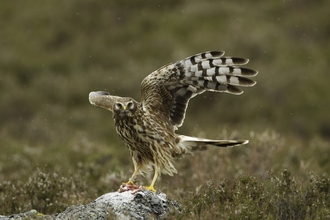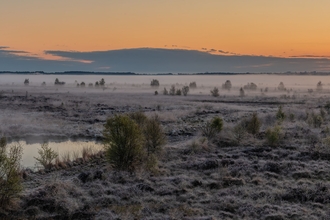Once common, particularly in cities, where they played an important role in keeping the Tudor streets clean of offal and scraps from butchering livestock, and often despised despite their usefulness, by 1903 the species was reduced to an estimated five to ten breeding pairs. As a child I longed to see one, but the only chance would have involved a trip to the hidden fastness of rural Wales. I rejoice to see them here!
Following conservation efforts and legal protection against persecution by game keepers and egg-collectors, the population in Wales gradually built, reaching the 100 pair milestone in 1993. As numbers increase exponentially, birds seeking breeding territories have spilled over into Shropshire. The first successful breeding of the species in the county for 130 years was recorded in 2006.The Shropshire Ornithological Society Birds of Shropshire atlas (Leo Smith, 2019) records a possible 215 occupied breeding territories surveyed between 2008 and 2013, all in the South-West quarter of the county.
So what are they doing up here in North-West Shropshire? Where did they go in the winter, when I don’t think I saw a single one? Red kites don’t breed until they’re two or three years old, so ours could be youngsters dispersing and scouting out potential territories for the future. However, we’ve been seeing them since at least 2013, when I had a particularly memorable encounter. I was sitting at the table, eating breakfast and gazing idly out of the ground-floor window, when a red kite swooped through the garden right at eye level. The colours – rich rufous red set off by a grey-white head, the trademark forked rudder tail twisting constantly, the almost-two-metres wingspan looking jaw-droppingly huge, the languid, effortless grace – what a view! I nearly dropped my toast.
Nesting kites are notoriously difficult to locate. They don’t call near the nest – a large, stick-built structure high in a tree, often based on a disused raven or buzzard nest. They ‘sneak’ to the nest, flying past and circling the site rather than flying directly to it. Centuries of persecution has bred caution. Nest records are understandably kept confidential, but I’m hopeful I might see families of kites taking the wing together.
During the winter, red kites gather in communal roosts. Thirty or so birds might congregate, in the same way corvids do, possibly to share information on foraging opportunities for the better survival of all. The kites that soar on our thermals here might relocate for the winter to somewhere they can gather with more of their kind. Winter roosts have been located in the South-West of Shropshire, but again, little is known about their movements up here in the north.
If you have any information about potential breeding sites, please contact Leo Smith (Shropshire Ornithological Society) – email leo@leosmith.org.uk, but otherwise, keep it to yourself. Red kites are still suffering direct and indirect persecution by shooting and poisoning. Every single one that graces the skies of the county should be cherished!




